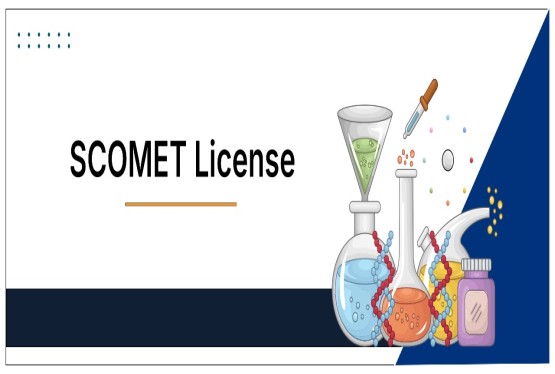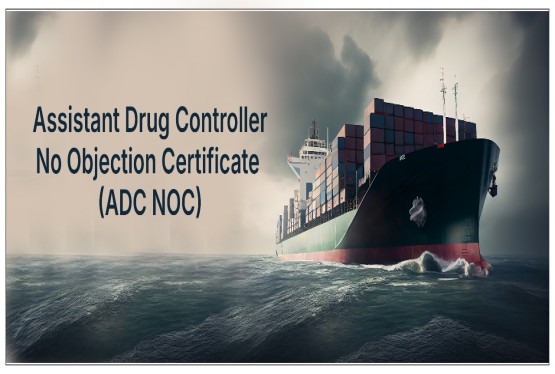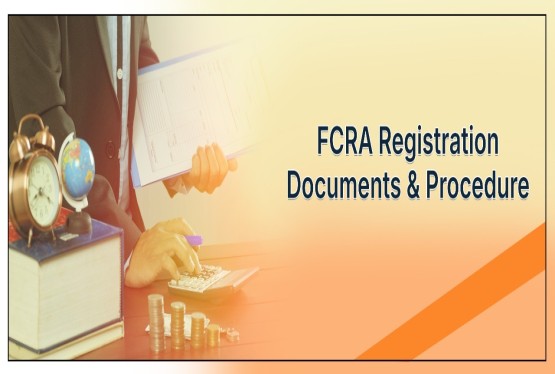Environmental Audit is the methodological assessment of the production activities and processes of a project to conclude whether these activities comply with the authorised environmental management guidelines, sustainable environmental practices, and legal and environmental criteria. It involves a detailed examination of environmental management systems, accounting for the use of natural resources, and assessing compliance with various environmental policies and laws. Environmental Audit also serves as an essential tool for investigating, understanding, and identifying the environmental performance of interested parties.
The primary purpose of Environmental Audit is to ensure that organizations manage their activities responsibly, with minimal environmental impact. It involves examining the revenues, costs, and valuations of environmental and natural resources, tracking their estimation, depreciation, and proper recording in the books of accounts. Environmental Audit ensures that organisational management systems and equipment operate with the goals of facilitating management control of environmental practices, assessing compliance with company policies, and promoting professional competence.
Areas Covered Under Environmental Audit
Environmental Audit covers a broad range of areas that are essential for maintaining environmental sustainability. These include:
-
Energy: Evaluating energy consumption patterns, energy efficiency measures, and energy conservation techniques.
-
Waste Management: Inspecting waste generation, segregation, recycling, and safe disposal.
-
E-waste: Handling electronic waste in compliance with regulations and promoting recycling initiatives.
-
Plastic Waste: Assessing the reduction, reuse, and recycling of plastic materials.
-
Hazardous Waste: Managing toxic and hazardous waste to avoid environmental contamination.
-
Bio-medical Waste: Safely managing healthcare-related waste to prevent infection and environmental hazards.
-
Air & Water: Monitoring air and water quality parameters and implementing measures to minimize pollution.
-
Carbon Dioxide and Other Emissions: Assessing and reducing greenhouse gas emissions to combat climate change.
-
Food Sector: Ensuring eco-friendly practices in food production and processing.
-
Chemical Sector: Managing chemical production processes with minimal environmental impact.
-
Pharmaceutical Sector: Ensuring proper handling and disposal of pharmaceutical products.
-
Automobile Sector: Promoting environmentally responsible manufacturing and waste management practices.
-
Composting: Encouraging organic waste management through composting techniques.
Each area is critical to ensuring that industries contribute positively to environmental sustainability.
Benefits of Environmental Audit
The benefits of Environmental Audit can be categorised into three main categories: Financial, Compliance, and Stakeholder Relations.
Financial Benefits
Environmental Audit helps organisations avoid fines that may be imposed by regulatory authorities for non-compliance with environmental norms. It also identifies potential cost savings by promoting resource efficiency and reducing waste. Moreover, it minimizes the costs associated with corrective actions that would otherwise be needed in the absence of proper environmental management.
Compliance Benefits
Successful Environmental Audit increases employee awareness about environmental standards and responsibilities. It educates the workforce on compliance requirements and helps control the impact of pollutants on the environment. This proactive approach towards compliance prevents legal issues and improves overall organizational efficiency.
Stakeholder Relations Benefits
Environmental Audit enhances employee morale and improves internal relations by promoting a sense of responsibility towards the environment. It helps build a positive image of the enterprise in the market and boosts goodwill among consumers, investors, and other stakeholders. Organisations with successful Environmental Audit programs are more attractive to investors who prioritize corporate responsibility.
Main Objectives of Environmental Audit
The main objectives of Environmental Audit include:
-
Reviewing Policy Implementation: Environmental Audit assesses the effectiveness of environmental policies implemented by the organisation.
-
Identifying Needs, Strengths, and Shortcomings: It helps in understanding the organisation’s areas of improvement and strengths related to environmental management.
-
Evaluating Policy Implementation: Environmental Audit ensures that the policies are not only framed but are effectively put into practice.
-
Meeting Compliance Requirements: Organisations are able to meet regulatory requirements and prepare reports for submission to government agencies.
-
Increasing Production Health and Safety: A safer working environment is promoted by identifying environmental risks and mitigating them.
-
Preserving Resources: Environmental Audit encourages conservation of natural resources such as water, energy, and raw materials.
-
Checking for Adherence to Legal Requirements: It verifies that the organisation complies with all applicable environmental laws and regulations.
-
Making Environmental Information Public: Transparency is enhanced by making environmental performance data available to the public.
-
Lessening Waste: Environmental Audit identifies opportunities for reducing waste generation and promoting recycling.
Procedure of Environmental Audit
Environmental Audit is regulated in India by the Comptroller and Auditor General (CAG) and the Central and State Pollution Control Boards (C/SPCB). It follows specific guidelines laid down by the Manual of Standing Orders (Audit) 2002.
The procedure of Environmental Audit involves the following stages:
Pre-Audit Activities
-
Selection of Expert Team: An expert team comprising environmental specialists is selected.
-
Development of a Plan: A comprehensive plan is developed, defining the scope of the audit, selecting priority areas, laying down procedures, and allocating team resources.
On-Site Activities
During on-site activities, records and documentation are reviewed thoroughly. Interviews with staff members are conducted to understand operational practices. A physical inspection of the facilities is carried out to verify the implementation of environmental policies.
Post-Audit Activities
Post-audit activities involve the development of raw material balance examinations for each manufacturing unit. Sensitive areas like water, energy consumption, vegetation removal, and pollution audits are evaluated. Emission standards are also reviewed to ensure compliance.
Environmental Audit Scheme (EAS)
The Environmental Audit Scheme includes three critical elements:
State Pollution Control Board (SPCB)
The SPCB plays a crucial role in executing Environmental Audit. It formulates the layout of the audit report covering all aspects of environmental protection. The SPCB employs internal auditors to formulate industry audit reports, assesses and authenticates the audit reports, and initiates action based on the evaluated reports.
Internal Auditor Board (IAB)
Internal auditors are seasoned professionals from diverse fields. According to SPCB regulations, it is mandatory to hire a certified auditor who is equipped with a laboratory capable of analysing water and air samples. Internal auditors perform the initial assessment and reporting.
External Auditor (EA)
External auditors must obtain approval from the SPCB. Their task is to evaluate and verify audit reports and convey their observations to the SPCB for further action.
Principal Areas of Environmental Audit
Environmental Audit broadly covers the following principal areas:
Material Audit
Material Audit focuses on the utilization of various raw materials and the regular usage of resources. It examines the cost units, intelligent process utilization, and waste generation. The preservation of raw materials, scientific storage, and the reuse of waste materials are critical elements of Material Audit.
Vitality Audit
Vitality Audit investigates the usage of different types of energy in various industrial processes. The primary aim is to minimize and eliminate avoidable losses of valuable energy. The audit promotes the conservation of energy by recommending efficient usage and identifying energy-saving opportunities.
Water Audit
Water Audit involves evaluating the consumption of water at different sources within the organisation. It emphasizes the importance of reusing and recycling water, assessing the raw water intake, and balancing water tables and natural sources. Efficient water management is crucial for sustainable operations.
Well-being and Safety Audit
The well-being and safety of employees are paramount. Environmental Audit ensures that proper measures are taken for the disposal of hazardous and toxic waste. It also assesses fire prevention measures, safety protocols, and the overall health environment of the workforce.
Natural Quality Audit
Natural Quality Audit focuses on conserving every aspect of the environment. It reviews practices that impact air, water, soil, and biodiversity, aiming to maintain or enhance the natural quality surrounding industrial operations.
Waste Audit
Waste Audit examines the types and quantities of waste generated by industries. It assesses waste management practices such as segregation, recycling, treatment, and safe disposal to minimize environmental impact.
Designing Audit
Designing Audit evaluates the construction and engineering technologies used by the organisation. It ensures that appropriate processes and building applications are in place to support environmental sustainability.
Consistency Audit
Consistency Audit verifies that all environmental activities are carried out according to laid-down guidelines, procedures, and the policies of the organisation. It ensures that there is no deviation from prescribed environmental standards.
Conclusion
Environmental Audit is an indispensable tool for ensuring that industrial and organisational activities align with environmental sustainability goals. By promoting compliance, conserving resources, and safeguarding the environment, Environmental Audit not only benefits the organisations but also society at large. It strengthens the image of companies as responsible corporate citizens, attracting investors, enhancing employee morale, and building long-term goodwill. Through structured procedures, dedicated audit teams, and adherence to regulatory frameworks, Environmental Audit contributes significantly towards building a cleaner, greener, and more sustainable future.
If you have any queries or want to know more about Environmental Audit then you can book a consultation with Compliance Calendar experts through email info@ccoffice.in or Call/Whatsapp at +91 9988424211.
FAQs
Q1. What is an environmental audit, and how does it differ from environmental monitoring or inspection?
Ans. An environmental audit is a structured and objective process of evaluating an organization's environmental performance. It involves a systematic review of operations and facilities, assessment of compliance, identification of liabilities, and recommendations for improvement. Unlike environmental monitoring, which involves the ongoing measurement of specific environmental parameters (like emissions levels), or inspections, which are often focused on a specific point in time or a particular issue, an environmental audit is broader. It assesses the overall environmental management systems, processes, and outcomes over a period.
Q2. What are the primary goals and the typical scope of an environmental audit for an organization?
Ans. The primary goals of an environmental audit include ensuring legal compliance with environmental regulations and permits, reducing environmental risks (such as mishandling hazardous waste), improving operational efficiency by identifying waste in resource use, enhancing sustainability performance and stakeholder confidence, and supporting due diligence activities. The scope of an audit can encompass various aspects, such as emissions to air, water, and land; energy and resource consumption; waste management; chemical use and storage; impacts on biodiversity; climate risk assessment; and emergency response planning.
Q3. What are the different classifications of environmental audits, and what distinguishes internal audits from external audits?
Ans. Environmental audits can be classified based on scope, objective, and function. Based on scope, the main types are internal audits, conducted by the company for self-assessment and improvement, and external audits, performed by third-party specialists often for certifications or regulatory requirements. Based on objective, audits can be compliance-focused, performance-oriented, for liability assessment (due diligence), or aimed at evaluating management systems (like ISO 14001). Based on function, there are Environmental Site Assessments (ESAs), Pollution Control Audits, and Product Lifecycle Audits. The key difference between internal and external audits lies in their independence and purpose; internal audits serve the organization's internal needs, while external audits provide an independent assessment often required by external stakeholders.
Q4. How does an Environmental Audit (EA) differ from an Environmental Impact Assessment (EIA) in terms of timing, purpose, and focus?
Ans. An Environmental Audit (EA) and an Environmental Impact Assessment (EIA) differ significantly. An EIA is conducted pre-project approval to predict the potential environmental impacts of a proposed project. Its purpose is to assess these potential impacts before they occur, often as a legal requirement for large developments. The focus of an EIA is on planned activities. In contrast, an Environmental Audit (EA) is conducted post-operation to evaluate an organization's existing environmental compliance and performance. Its purpose is to assess actual operations, identify areas for improvement, and ensure adherence to regulations.
Q5. What are some of the key benefits for organizations that proactively conduct environmental audits, and what role does technology play in modern auditing practices?
Ans. Proactively conducting environmental audits offers several operational benefits, such as improved efficiency, reduced waste and costs, and enhanced staff awareness. Legal and financial benefits include a reduced risk of fines and shutdowns, better financing terms, and pre-emptive defense against litigation. Strategically, it leads to a stronger ESG profile, eligibility for green certifications, and improved market differentiation. Technology plays an increasingly significant role in modern audits through the use of Environmental Management Information Systems (EMIS), remote sensors for monitoring, GIS mapping for impact visualization, and tools like drones and infrared cameras for inspections. These technologies enhance efficiency, accuracy, and the comprehensiveness of environmental audits.












































































_crop10_thumb.jpg)







_Rules,_2025_learn_crop10_thumb.jpg)
























































































_crop10_thumb.jpg)








 in BIS FMCS_learn_crop10_thumb.jpg)






